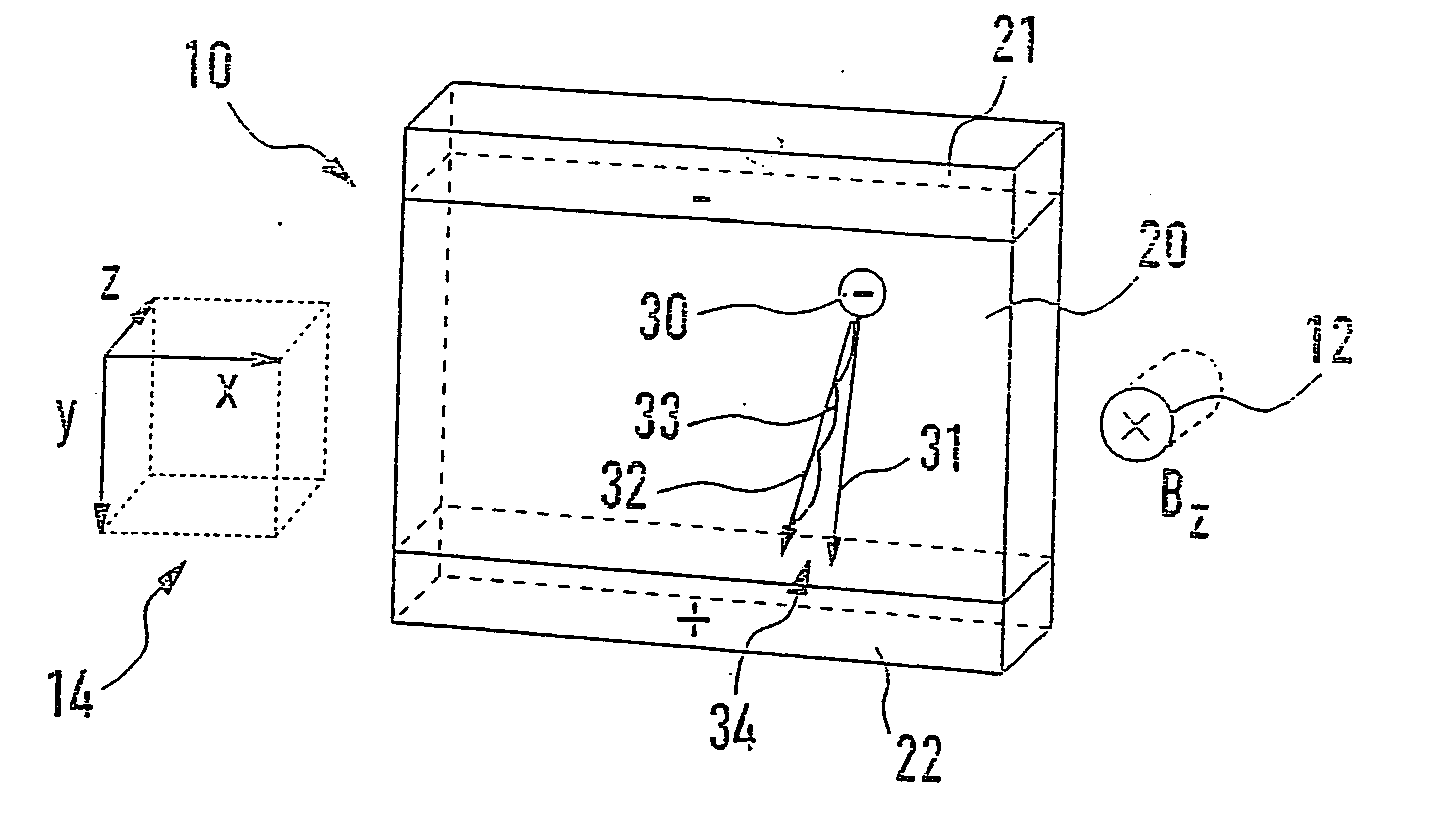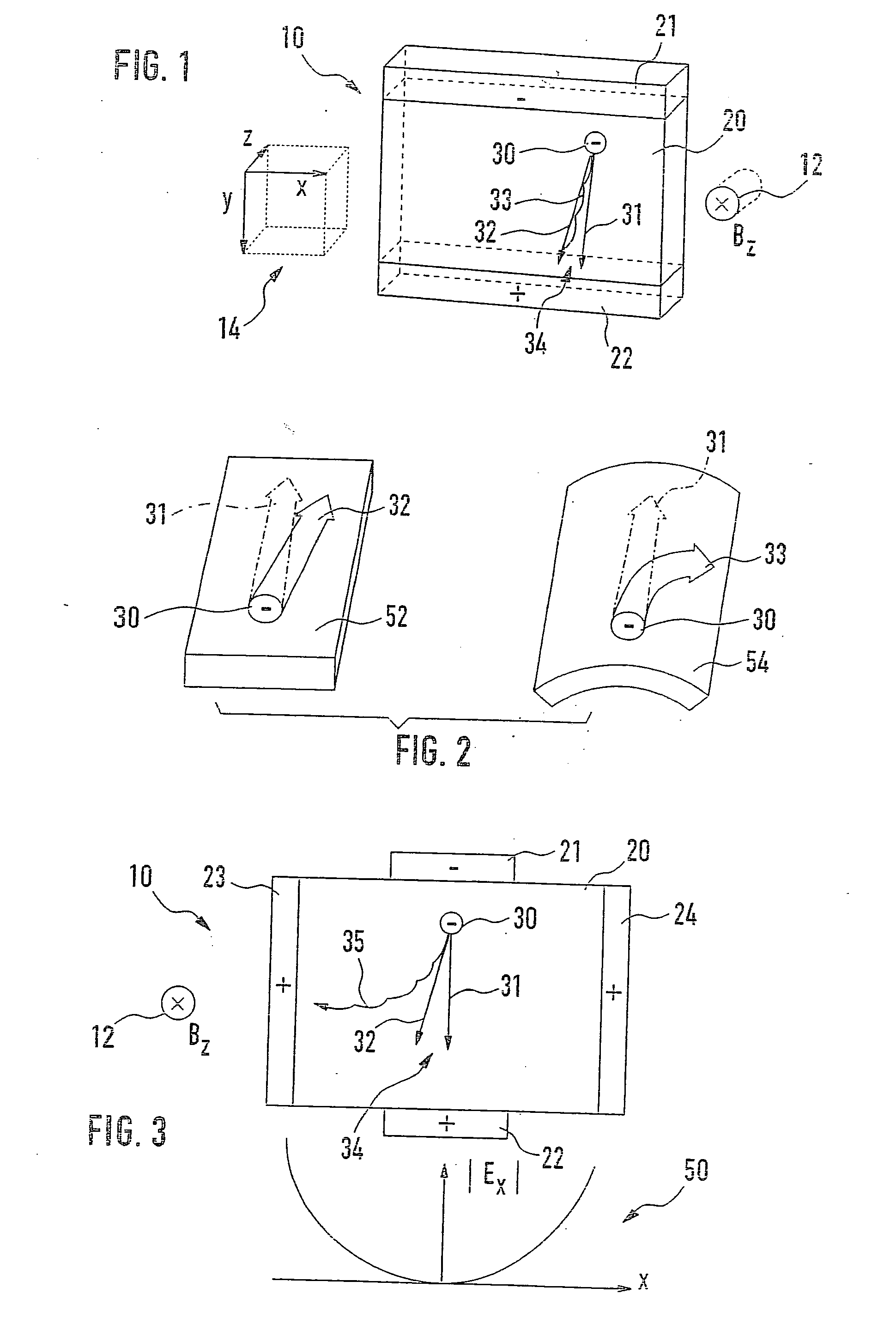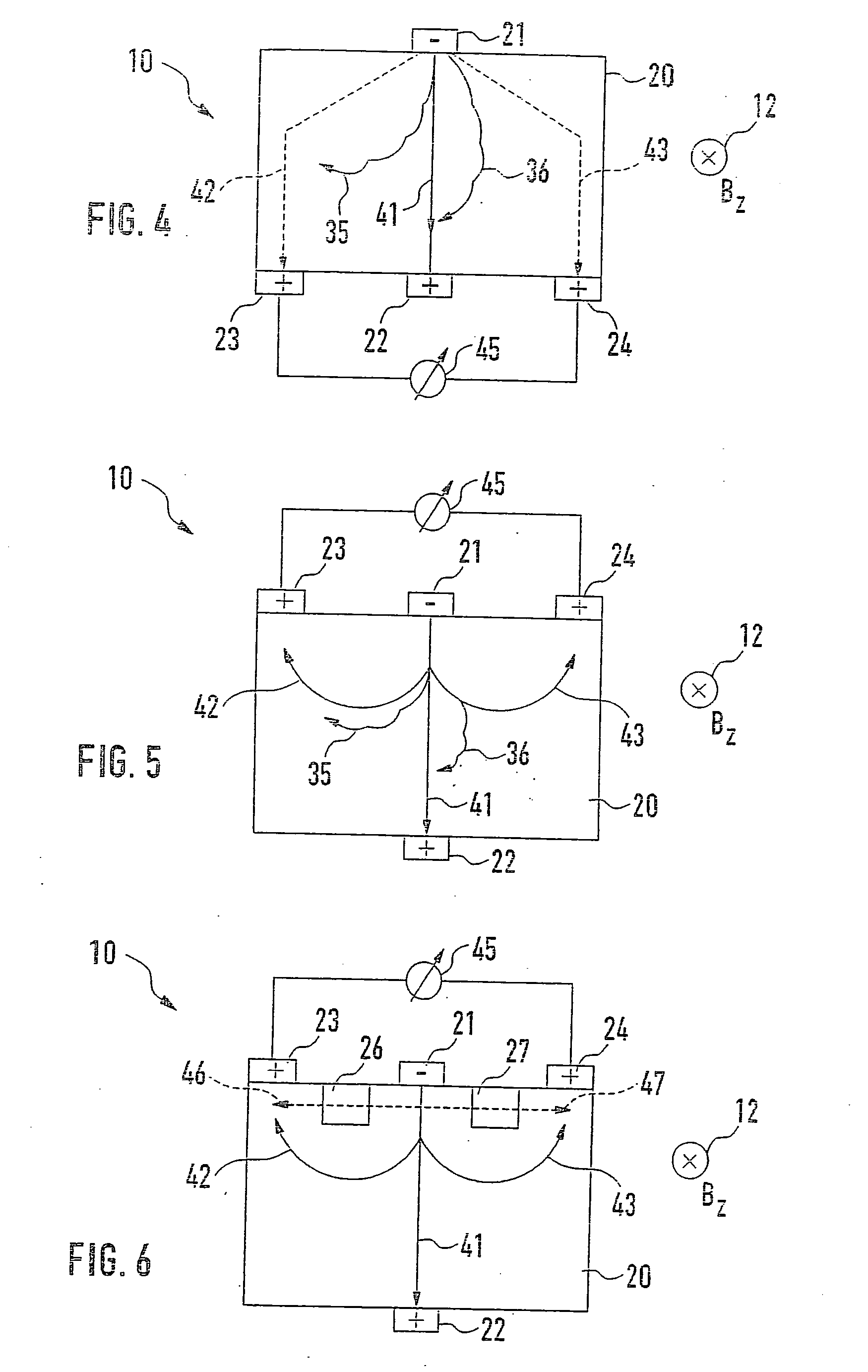Device for measuring a b-component of a magnetic field, a magnetic field sensor and an ammeter
a technology of magnetic field and ammeter, which is applied in the direction of individual semiconductor device testing, galvano-magnetic hall-effect devices, instruments, etc., can solve the problems of space requirements and disadvantages of flux concentrators, show saturation effects and signs of hysteresis, and achieve cost-effective effects
- Summary
- Abstract
- Description
- Claims
- Application Information
AI Technical Summary
Benefits of technology
Problems solved by technology
Method used
Image
Examples
Embodiment Construction
[0016] The functioning principle of a standard Hall-effect sensor 10 is schematically represented in FIG. 1. Hall-effect sensor 10 includes a region 20, which is normally provided in a semiconductor substrate. In addition, Hall-effect sensor 10 includes a first terminal 21 and a second terminal 22. Provided between first terminal 21 and second terminal 22 is an electric field not shown, through which a charge carrier 30 that is denoted in the figure by a minus sign, as a negative charge carrier 30, is moved from first terminal 21, through region 20, to second terminal 22. Accordingly, first terminal 21 is at a negative potential and denoted by a minus sign, while second terminal 22 is indicated by a positive sign and is at a positive potential. The voltage applied between first terminal 21 and second terminal 22 brings charge carrier 30 from first terminal 21 into region 20; this occurring along an introduction direction, which is designated in the figure to be in the vertical direc...
PUM
 Login to View More
Login to View More Abstract
Description
Claims
Application Information
 Login to View More
Login to View More - R&D
- Intellectual Property
- Life Sciences
- Materials
- Tech Scout
- Unparalleled Data Quality
- Higher Quality Content
- 60% Fewer Hallucinations
Browse by: Latest US Patents, China's latest patents, Technical Efficacy Thesaurus, Application Domain, Technology Topic, Popular Technical Reports.
© 2025 PatSnap. All rights reserved.Legal|Privacy policy|Modern Slavery Act Transparency Statement|Sitemap|About US| Contact US: help@patsnap.com



